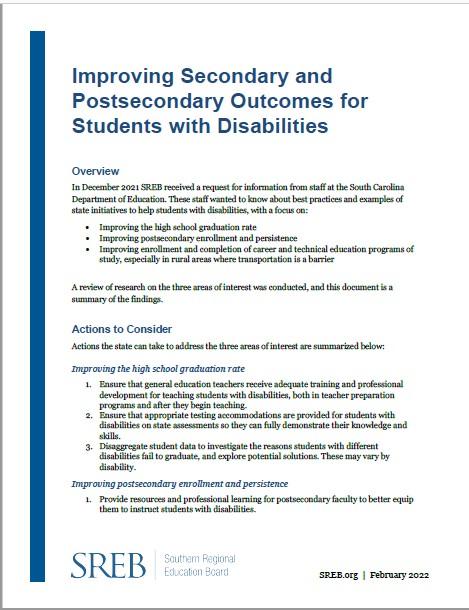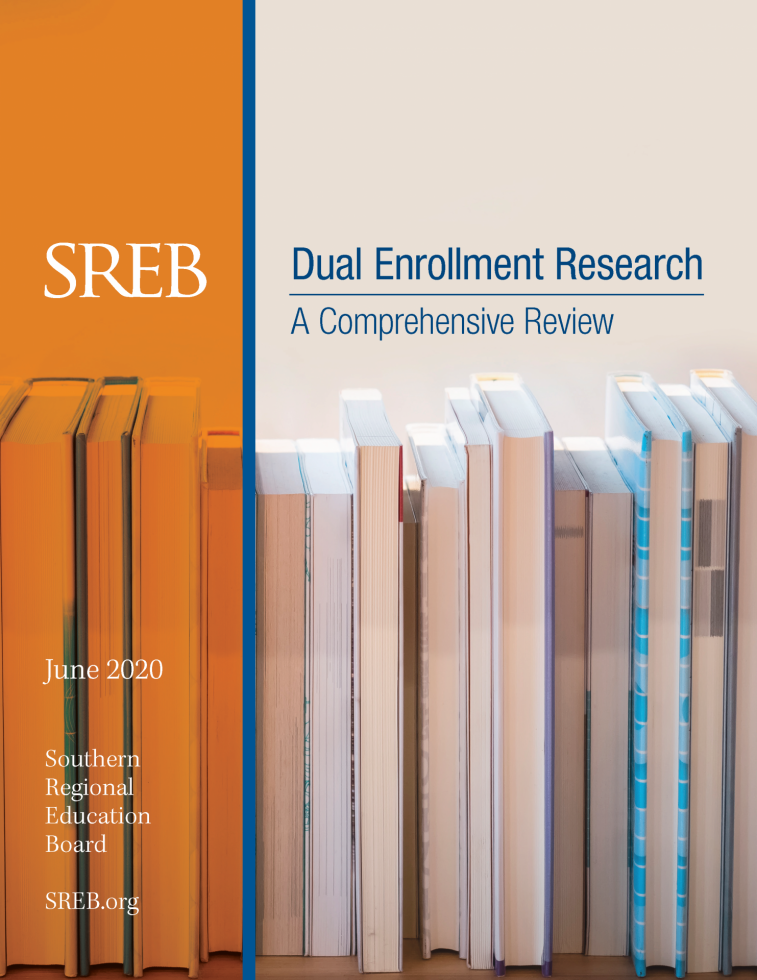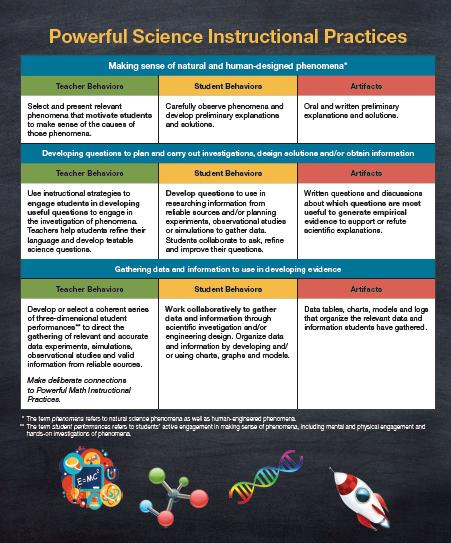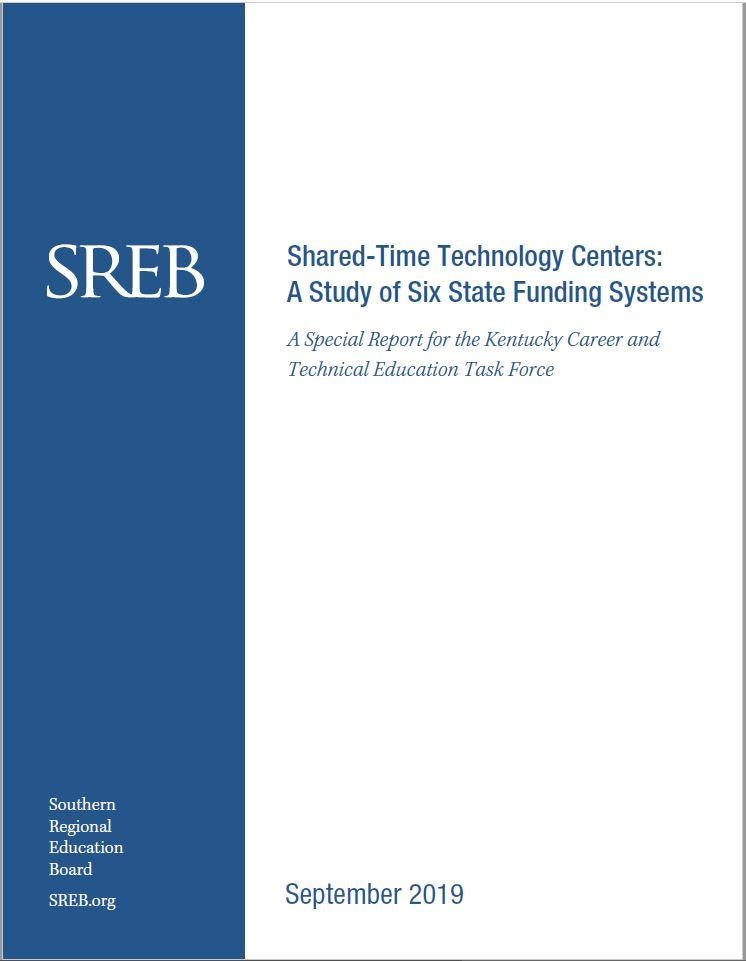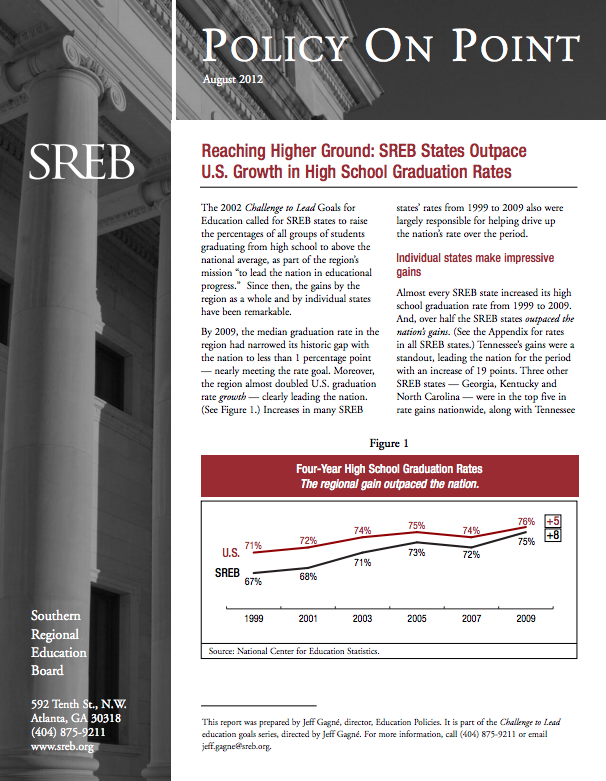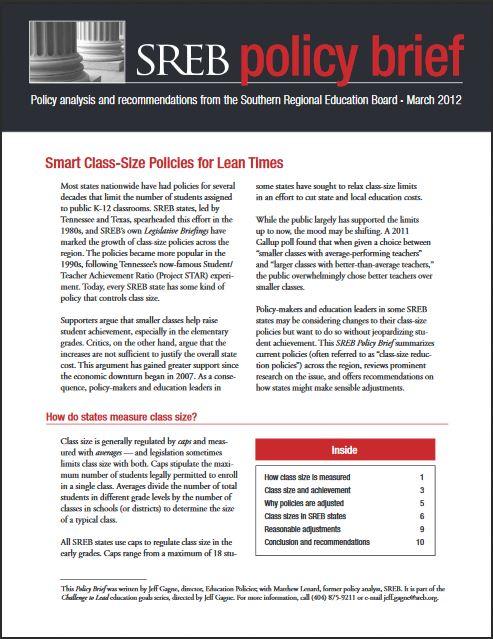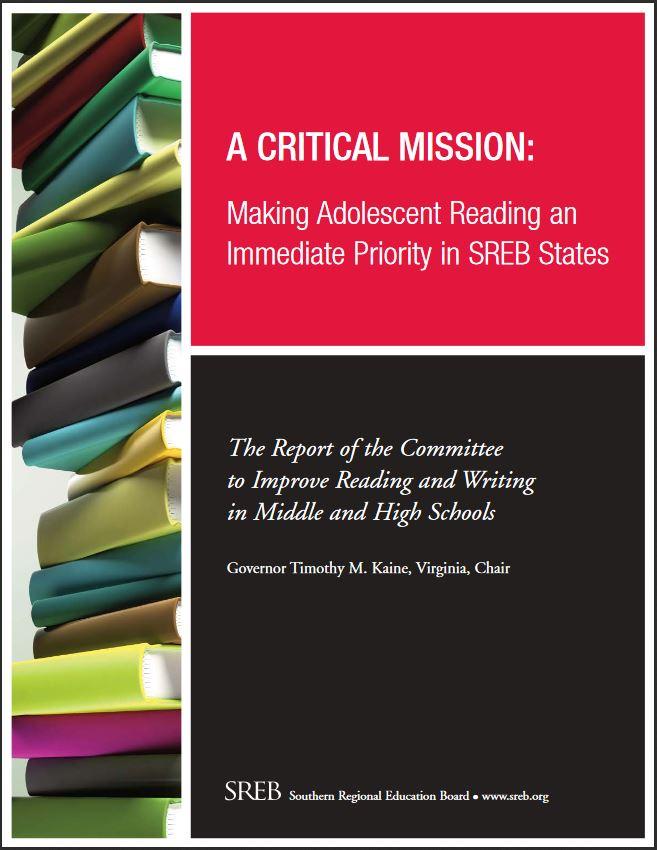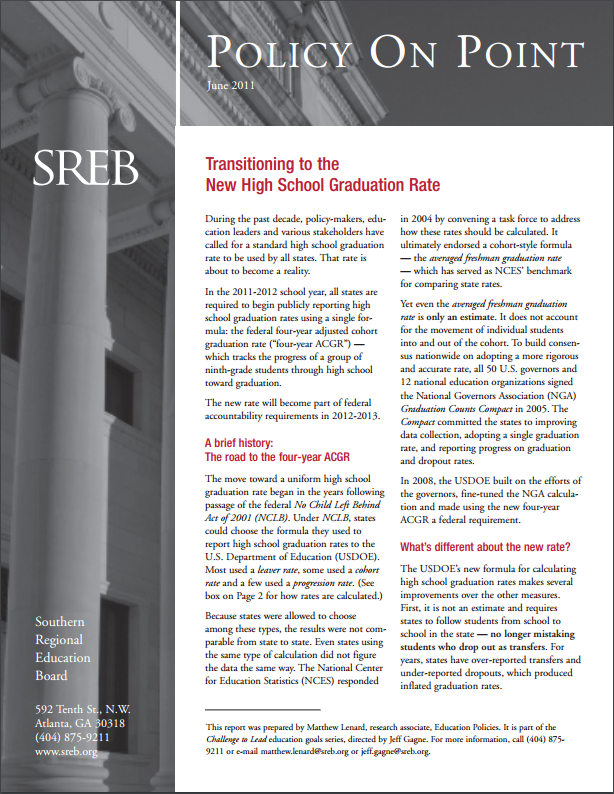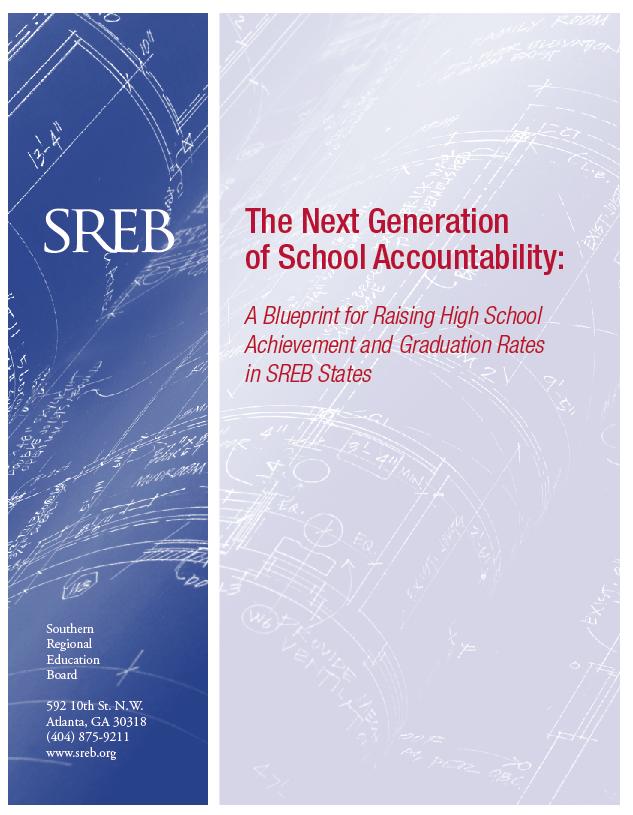Education Level: High School
High School
9th to 12th grade
Improving Secondary and Postsecondary Outcomes for Students with Disabilities
How can states, schools and colleges help students with disabilities to improve high school graduation rates, postsecondary success, and career and technical education participation?
This piece, produced for a request from a state department of education, includes actions to consider, examples from SREB states and a review of current research on professional development, educational technology and individualized instruction.
Advanced Career
High-tech skills plus high-level academics
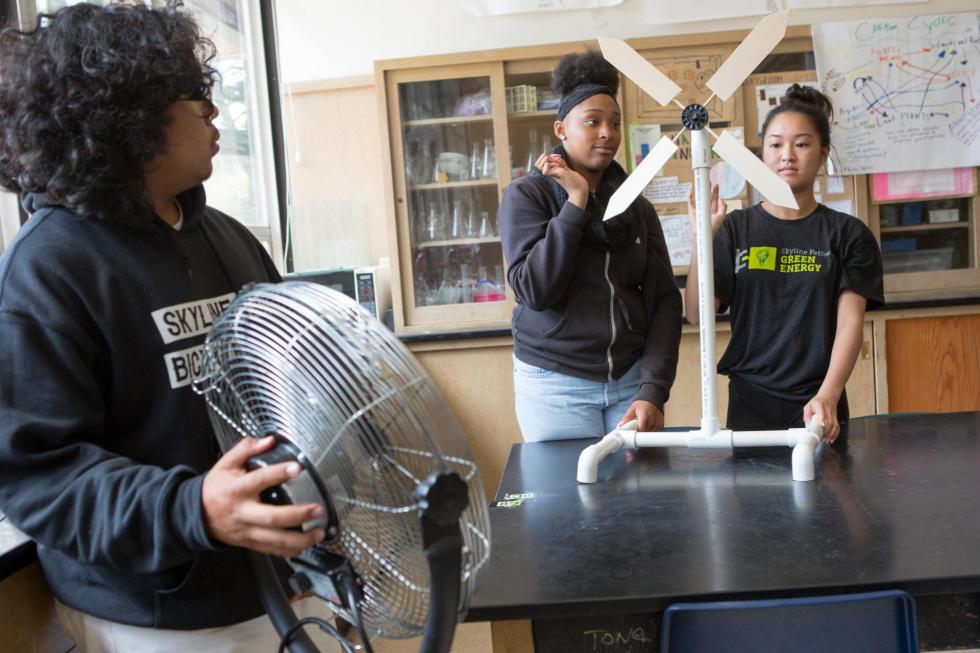 To help high schools prepare
students for both college and careers, SREB partnered
with state leaders, local employers and master teachers to
develop Advanced Career. Four-course pathways connect
academics with hands-on projects so students see how learning
connects to life outside the school walls.
To help high schools prepare
students for both college and careers, SREB partnered
with state leaders, local employers and master teachers to
develop Advanced Career. Four-course pathways connect
academics with hands-on projects so students see how learning
connects to life outside the school walls.
From aerospace engineering to clean energy technology, the research-based curricula allow teens to test drive careers in high-demand STEM fields while building college-ready reading, writing, math, science and workplace skills.
Dual Enrollment Research
A Comprehensive Review
Part of the ongoing work of SREB’s Dual Enrollment Initiative, this comprehensive review is intended to help policymakers better understand what the research tells us (and what it doesn’t) about dual enrollment. The research analyzes more than 500 journal articles, master’s theses, doctoral dissertations, web documents and books from 1959 to 2019.
Powerful Science Instructional Practices
Shared-Time Technology Centers
A Study of Six State Funding Systems
Students need learning experiences connected with the world of work to equip them to enter the workforce and secure good jobs. This report provides an overview of funding for career and technical education and a detailed look at CTE funding models in Arkansas, Indiana, Ohio, Oklahoma, South Carolina and West Virginia. Produced by SREB for the Kentucky Career and Technical Education Task Force, it also offers considerations for actions to improve CTE.
SREB States Lead the Nation in High School Graduation Rates
Graduation rates are up again in states across the nation – and SREB states lead the pack once again in data released this week by the United States Department of Education.
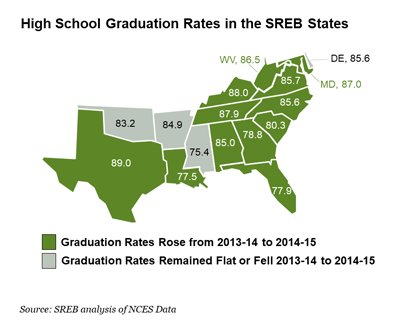 Graduation rates climbed in 11 of the 16 SREB states between the 2013-14 and 2014-15 school years. Ten SREB states tied or exceeded the national rate. Three of the SREB states were on the list of top 10 states: Kentucky, Tennessee and Texas.
Graduation rates climbed in 11 of the 16 SREB states between the 2013-14 and 2014-15 school years. Ten SREB states tied or exceeded the national rate. Three of the SREB states were on the list of top 10 states: Kentucky, Tennessee and Texas.
Credentials for All: An Imperative for SREB States
SREB’s Commission on Career and Technical Education offered eight actions states can take to build rigorous, relevant career pathways. Supported by policies and practices described in the report, these actions can help states increase the percentage of young adults earning valuable industry and postsecondary credentials.
Pathways to Opportunity
High School to College and the Workplace
Labor market economists project that by 2020, two-thirds or more of all jobs will require some postsecondary education — either a certificate, a credential or a degree at the associate level or higher.
Reaching Higher Ground
SREB States Outpace U.S. Growth in High School Graduation Rates
The 2002 Challenge to Lead Goals for Education called for SREB states to raise the percentages of all groups of students graduating from high school to above the national average, as part of the region’s mission “to lead the nation in educational progress.” Detailed in this SREB Policy on Point report, the gains made by the region as a whole and by individual states since that time have been remarkable. Almost every SREB state increased its high school graduation rate from 1999 to 2009, and more than half outpaced the nation’s gains.
Smart Class-Size Policies for Lean Times
This policy brief summarizes class-size reduction policies across the region, reviews research on the issue, and offers recommendations on how states might make sensible adjustments without jeopardizing student achievement.
A Critical Mission
Making Adolescent Reading an Immediate Priority in SREB States
Report of the Committee to Improve Reading and Writing in Middle and High Schools
Nationwide, students in the middle grades and high school are failing to develop the reading and writing skills they need in order to meet higher academic standards. This major SREB report on adolescent literacy discusses the urgency of the problem in depth and presents specific solutions for SREB states based on the recommendations of the SREB Committee to Improve Reading and Writing in Middle and High Schools, chaired by Governor Tim Kaine of Virginia, the SREB Board chair. The report includes a message from SREB President Dave Spence and status reports on recent state actions on the issue.
Transitioning to the New High School Graduation Rate
For nearly a decade, states have had flexibility in collecting and reporting graduation rate data for state and federal accountability purposes. But in 2008, the U.S. Department of Education issued new guidelines that require all states to report a new rate – the four-year adjusted cohort graduation rate - beginning in the 2011-2012 school year.
Strengthening Attend n’ Drive Laws
To Reduce Truancy and Dropouts
The majority of states nationwide and all 16 SREB states link eligibility for a driver’s license to school attendance (and in some cases to academic performance). This policy brief compares attend ‘n’ drive laws across SREB states, takes a look at their effectiveness, and offers recommendations for states.
The Next Generation of School Accountability
A Blueprint for Raising High School Achievement and Graduation Rates
Report of the Committee to Improve High School Graduation Rates and Achievement
This report recommends strategies that states and public schools can use to improve student achievement and raise graduation rates. The report is based on the recommendations of the SREB Committee to Improve High School Graduation Rates and Achievement, led by Governor Sonny Perdue of Georgia.



